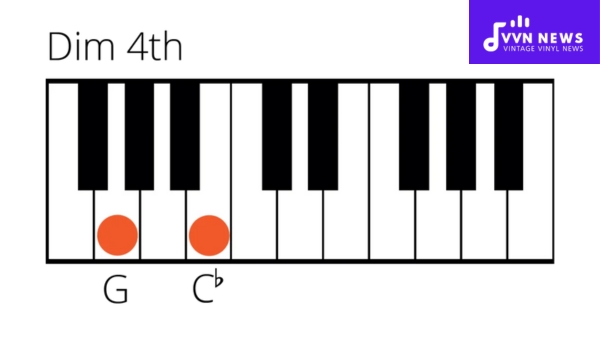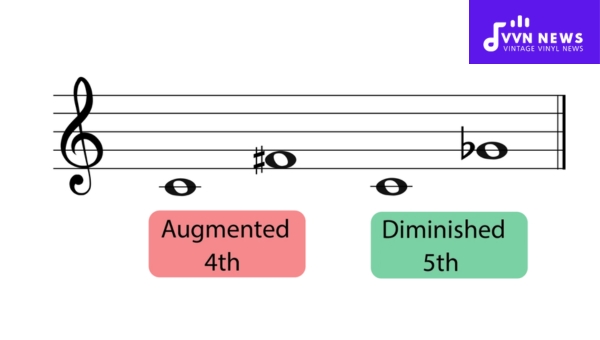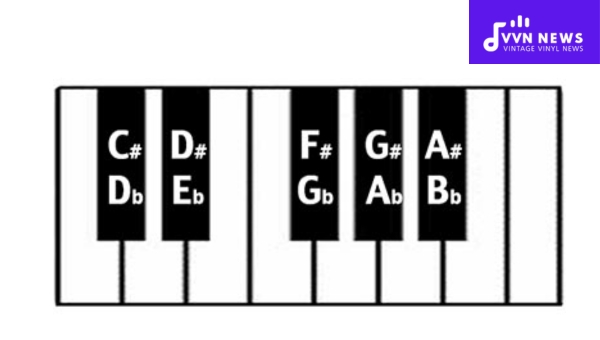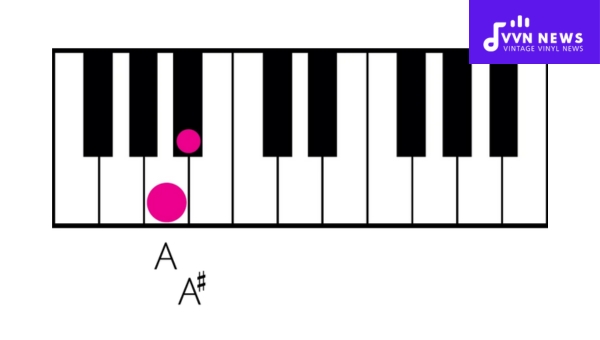Have you ever wondered how to work out augmented and diminished intervals? If you’re a musician or just a music enthusiast, these intervals is key to gaining a more profound comprehension of the music you write, play, or simply enjoy.
Intervals, being the distance between two pitches in music theory, essentially sets the groundwork for creating pleasing harmonies and melodies.
While most people can easily distinguish major from minor intervals, learning augmented and diminished intervals may require a little more finesse.
These types of intervals are critical in giving emotion and much-needed tension to our favorite songs.
That’s why I’m here to bring these complex concepts down to earth so that you can learn them with ease and implement them seamlessly into your music theories and practices.
Defining Augmented and Diminished Intervals
The beauty of music lies in intervals, which are simply the distances between two pitches.
In particular, Augmented intervals and Diminished intervals create unique twists that make tunes more intricate and emotionally rich.
Augmented Intervals occur when a pitch is raised by a half step from its original major or perfect intervals.
Let’s say, you have a C to D which is a major 2nd interval (comprising 2 half steps), raising the D by one-half step to D# makes it an augmented 2nd interval.
Diminished Intervals are formed by reducing the pitch of a minor or perfect interval by one-half step.
For instance, if you take a C to E that is normally a major 3rd interval (4 half steps), dropping the E by one half-step to Eb creates a diminished 3rd interval.
Both these types of intervals contribute significantly to eliciting powerful emotions from listeners.
Armed with this little nugget of information, we can delve deeper into how they shape the soundscape of any piece of music.
Also Read: Harmony In Music [Enhance Your Compositions With These Tips]
Describe the sound of augmented intervals and diminished intervals.
Experiencing augmented and diminished intervals is beyond a simple intellectual grasp; it’s also a sensory process. The key is in hearing them.

When you delve into the realm of augmented intervals, you’ll notice they evoke a sense of suspense or tension.
This intensity often results from enlarging or augmenting an interval by raising the top note or lowering the bottom one, leading to a distinct feeling of unresolved anticipation.
On the other hand, the diminished intervals carry a uniquely dissonant sound, often associated with a kind of harmonic instability.
This sensation comes from decreasing or diminishing an interval by lowering the top note or raising the bottom one, which creates an unsettled feeling demanding resolution.
Knowing these distinguishing aspects helps foster quicker recognition and proper application in any music arrangement, boosting your ability to produce expressive harmonies and melodies that resonate with listeners’ emotions.
How do you notate augmented intervals?
Augmenting an interval basically means expanding it by one semitone. Let’s break this down further.
Step 1: Identify the Interval
Firstly, decipher what the simple, or ‘natural’, interval would be without augmentation. You need to get acquainted with major and perfect intervals (such as unison, fourth, fifth, and octave).
Step 2: Augment the Interval
Take your chosen major or perfect interval and raise it by a semitone. For instance, if you have a C to E interval (a major third), raising E by a semitone makes it an E# which presents you with an augmented third.
In written music, augmenting intervals often leads to notes that look rare or unusual.
The notation then may result in double sharps (????) or double flats (????).
Simply put, these unusual-looking notes indicate that the note should be raised or lowered by two semitones respectively.
For instance, if you are working with G to B (a major third), you could augment this interval by writing B as ????B creating an augmented third.
Also Read: A Sharp Minor Pentatonic Scale [Unique Harmonic Possibilities]
How do you notate diminished intervals?
In the sphere of music, diminished intervals are notated with simple modifications to major and minor intervals.

Let’s dive deeper into how diminished intervals are noted:
1. Step One
Start by identifying the major or minor interval it would be if not diminished. For example, a diminished fifth is noted based on a perfect fifth.
2. Step Two
Lower the upper note a half step without altering its letter name designation. Moving from a perfect fifth like C to G, you would lower the G to Gb for a diminished fifth.
3. Step Three
Keep in mind, that diminished intervals always consist of one less half-step than their perfect or minor counterpart.
Using these steps should guide the process smoothly and help avoid any confusion when notating your music!
What involves ear training with intervals?
The ability to identify intervals by ear is undeniably essential.
Ear training focuses on improving your ability to recognize different intervals, providing you with a more nuanced experience when listening to or composing music.
- Internalization of Sound: With structured ear training, you’ll develop the ability to immediately recognize and identify intervals in any piece of music you’re listening to, not necessarily relying on written notation. This skill can help in transcription, replication, music creation, and appreciation.
- Improved Improvisation Skills: Knowing intervals by ear allows musicians to adjust their performances on the fly. This increased flexibility can pave the way for better improvisation skills as they are equipped with a refined sense of tonal spacing.
- Advancement of Composition Skills: Recognizing intervals by ear greatly enhances your composition skills as well. As you listen and adapt what’s in your mind’s eye (or rather, your internal ears), creating new pieces or arranging existing pieces becomes more streamlined.
- Recognition of Harmonic Structures: Decoding complex harmonic structures becomes significantly easier once interval training is mastered by ear because songs are built through various sequences of particular arrays of intervals.
- Facilitates Musical Memorization: Over time, interval recognition ingrains tonal memories into the brain, making it easier for musicians to score or even write music without an instrument at hand!
The practice of ear training with intervals provides vibrant hues for your musical palette.
Delve deeper into this aspect of music theory and hone your musical prowess!
Breaking down complex concepts into manageable bites makes it easier to digest these intricate constructs of musical language.
Also Read: F Sharp Minor Pentatonic Scale [How To Use In Your Compositions]
Explain intervals and enharmonic equivalence.
An interval constitutes the distance, measured in terms of pitches, between two notes.

They are the building blocks of musical theory, laying down the foundation for melody and harmony.
On another hand, enharmonic equivalence is a more nuanced concept. It refers to how identical pitches can be represented by different note names.
For instance, D sharp (D#) is enharmonically equivalent to E flat (Eb) as they sound the same although written differently.
There’s a vital intersection between intervals and enharmonic equivalence.
You may see an augmented second notated in one case, but an identical pitch might be labeled as a minor third elsewhere due to the phenomenon of enharmonic equivalence.
It makes you think twice when naming intervals and understanding that D# and Eb (though sounding matched) construct various intervals when paired with other notes.
Also Read: Transposition Chart [A Lifesaver For All Musicians]
FAQs
How do I determine if an interval is diminished or augmented?
An interval becomes diminished when you lower a minor or perfect interval by a half-step. Conversely, it becomes augmented if you raise a major or perfect interval by a half-step.
Can an interval be both augmented and diminished simultaneously?
No, an interval cannot be both; it’s either augmented (enlarged) or diminished (reduced) based upon its alteration from the standard major, minor, or perfect intervals.
Are augmented and diminished intervals only found in certain scales?
Augmented and diminished intervals can occur in various scales, especially in the harmonic minor, melodic minor, and whole-tone scales.
Is it necessary to know these intervals to read music effectively?
A solid grasp of these intervals is vital for accurate music reading and also for advanced musical concepts like modulation and transposition.
Do augmented intervals follow the same number patterns as major intervals?
Yes, augmented intervals follow the same basic numerical pattern as their respective major or perfect counterparts but are widened by one semitone.
Also Read: A Guide Transposing Into The Alto C [Navigate Music Transposition]
Conclusion
In wrapping up, identifying augmented and diminished intervals is essential for any musician looking to craft emotive pieces.
Remember that augmented intervals stretch beyond the major or perfect intervals, while diminished intervals are narrowed beneath the minor or perfect ones.
Dial-in your ear training, practice notation, and grasp the subtleties they bring to music.
With these tools at your disposal, you can confidently interpret musical scores and create your rich harmonic landscapes.








